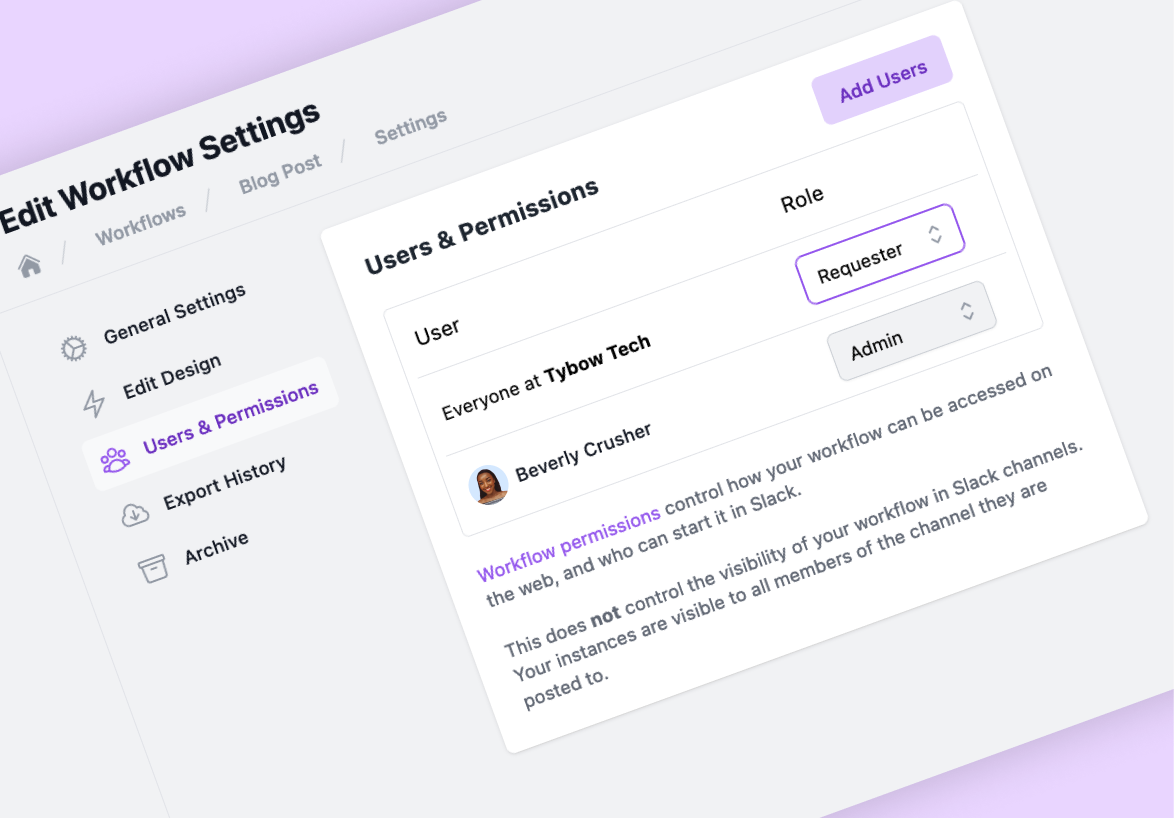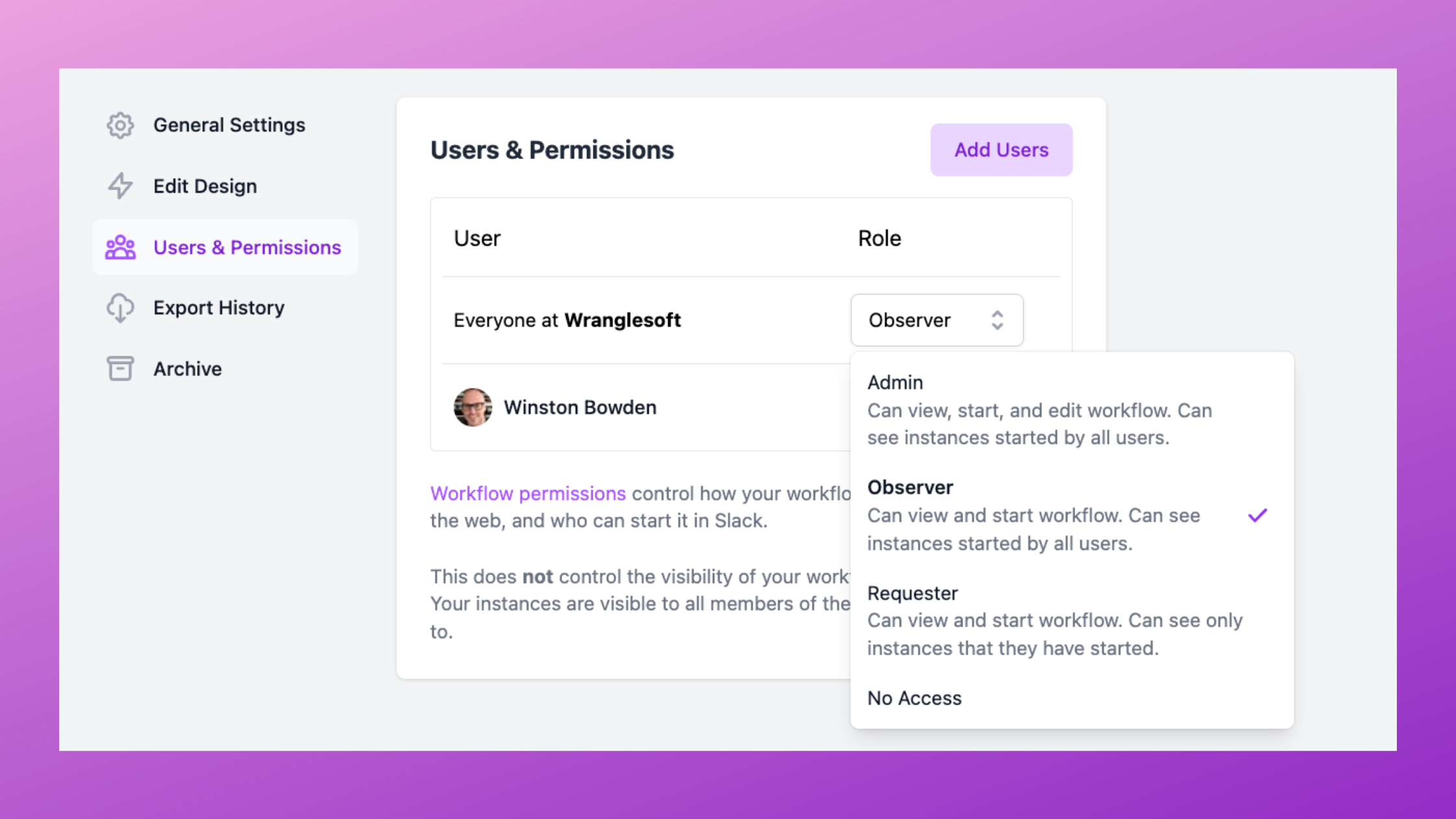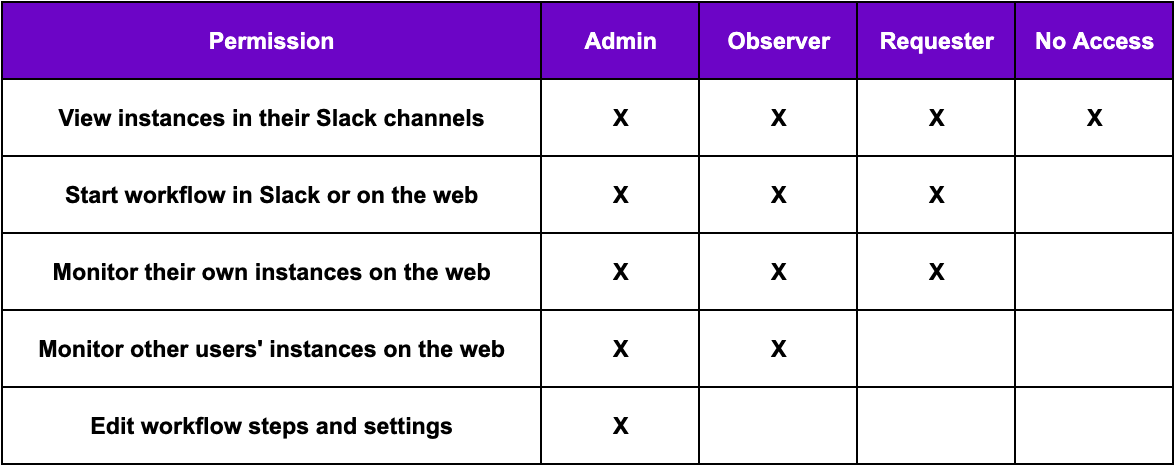Customize Workflows with Permissions and Roles
Roles give you control over who can access a workflow


We’ve released a new set of roles and permissions to give you more control over who can kickoff and access a workflow. Previously, workflows were available to everyone in Slack. Anyone from any team could start your workflow. Now, you can choose who can start and see a workflow by using roles and permissions. You’ll also be able to hide draft workflows until they’re ready to be published.
Here’s an overview of the new roles you can apply:
- Workflow Admins control the most important settings for a workflow. This role establishes visibility rights for all other roles and users. Admins can design, view, and kick off a workflow. They can also see the complete history of a workflow, which is useful for compliance auditing. Draft workflows can be hidden from your workspace until it’s ready to be published.
- Workflow Observers can monitor the performance of a workflow and triage points where instances are stalled, but they can’t edit the workflow. Observers are frequently in the team that created the workflow and can see all instances in progress. You might set a user as an observer if they’re a frequent user of the workflow, and you don’t want them to have the ability to change or edit the flow. Managers who want visibility but don’t require admin control might also be set as an observer.
- Requesters are your end-users who need help with an issue. This could be the individual filing an IT ticket, kicking off a creative review, sales quote, or any other request that is made through a workflow. This user type has the ability to start a workflow and view their request in progress.
- Even users with no access can still see workflow posts in public Slack channels, but that is the extent of their access. They are unable to create a request using your workflow and won’t see it in their list of available workflows to start. No access users can’t monitor workflow instances on the web. You might use this setting if you’re working on a workflow and don’t want users to have access until it’s ready for launch.

Every business is different, and you have the flexibility to set up roles to fit your needs. Here are a couple of examples based on some sample workflow types:
You might be using a personnel workflow for compensation adjustments and promotions that only people managers can use, the HR team can monitor, and the head of HR can edit. Permissions would be set to:
- Default: No Access
- People managers: Requester
- HR team: Observer
- Head of HR: Admin
Employee expense reimbursement is a common workflow that everyone in the organization can use, but you probably only want the finance team to monitor these requests, and you might reserve editing permissions for the head of the finance department. Permissions would be set to:
- Default: Requester
- Finance team: Observer
- Head of Finance: Admin
If you’re a small company with one marketing team member, you might have a content request workflow where teams can submit a content request. If so, you would have a simple setup that might look like this:
- Default: Requester
- Marketing employee: Admin
You’ll be able to adapt the roles and permissions to fit your organizational structure. By default, the permission for everyone in your workspace is “Requester,” and the permission for the person who created the workflow is “Admin.”

To start using roles and permissions, visit Wrangle’s help docs for a step-by-step guide.

- Try Wrangle free for 14 days
- Turn messages into trackable tickets
- Build a scalable help desk



Turn Slack into a productivity powerhouse with Wrangle
Create a scalable helpdesk in Slack. Automatically turn messages into trackable tickets and provide faster, more transparent service to your colleagues and customers with Wrangle — Try it free!






